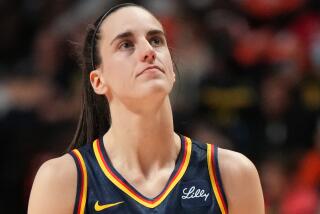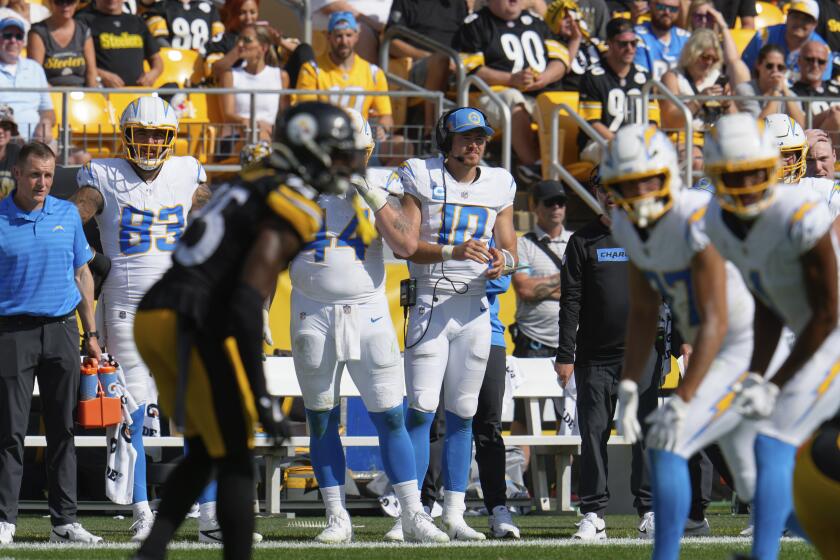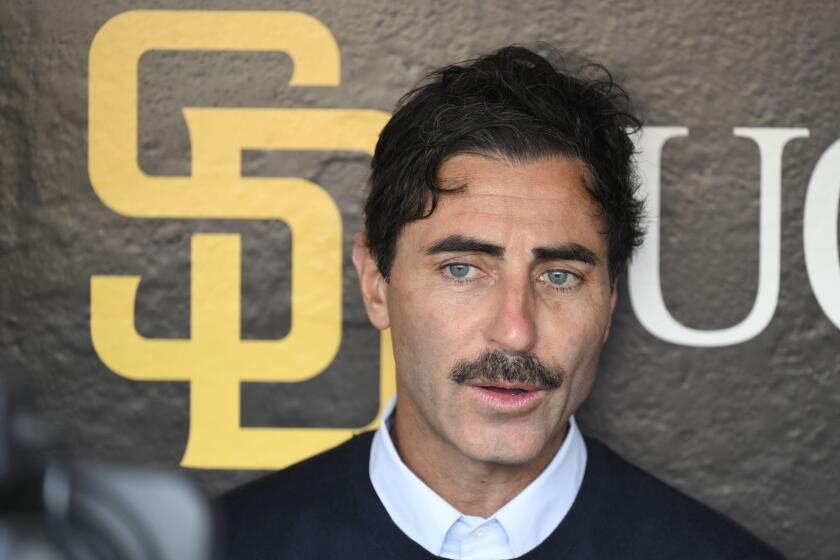Now this is taking one for the team
Billionaire T. Boone Pickens is being credited with a novel -- some would say morbid -- financing plan that his fellow Oklahoma State University fans hope will lift their beloved Cowboys football team to the top of the Big 12 Conference standings.
Over the course of the last year, Pickens, 77, steered his alma mater’s athletics department to buy life insurance policies for himself and a posse of aging Cowboys donors. The department hopes to net about $250 million from the proceeds by the time the last donor dies.
The insurance program is in addition to about $200 million in cash that Pickens has donated in recent years so Oklahoma State can better compete against rival Big 12 football powerhouses Texas, Nebraska and Oklahoma.
Although the Cowboys have won 48 national NCAA titles in such sports as wrestling and golf, that record isn’t good enough for the many Cowboys fans who care only for Oklahoma State’s performance on the gridiron.
The Pickens-inspired life insurance plan is seen as a way to help keep the university’s athletic department funded over the next few decades.
“Until Boone Pickens entered the picture for OSU, we were merely a participant in the Big 12 -- not a competitor,” said Mike Holder, Oklahoma State’s athletic director.
Oklahoma State’s insurance plan, which took about a year to piece together, underscores the sometimes controversial methods that colleges are considering to find new sources of revenue to fund coaches’ salaries, athletic scholarships, capital improvements and other expenses generated by major college sports.
Many wealthy donors remember college athletics in their estate planning. But having a university bundle up a group of donors and buy life insurance on them is a new twist.
“In recent years, there’s been a flurry of new charitable-related products coming from the insurance field,” said Chris Yates, director of planned giving at Stanford University. “I’ve had to scramble just to keep up with how they work.”
Stanford has yet to consider a Pickens-like insurance plan and probably would not unless it could outperform alternative investments, Yates said. That would mean matching or exceeding Stanford’s 14.8% average annual return over the last decade.
The Cowboys borrowed $20 million from a booster association to pay the premiums for $10 million in whole-life insurance policies for each of the 25 or so carefully selected donors, including Pickens, who are between the ages of 65 and 85.
Pickens got the idea about three years ago after a doctor judged him to be young and healthy enough to qualify for additional life insurance. Pickens, who made his fortune as a corporate raider, investor and oil man, did not need more coverage. But the 1951 Oklahoma State graduate -- with a geology degree -- soon was itching to leverage the newly discovered “asset.”
After learning that some churches were generating revenue from life insurance policies that had been purchased for aging members, Pickens floated the concept to Holder, a fellow alumnus who served for decades as golf coach before being named athletics director in 2005.
Oklahoma State’s donors were selected because their age, gender and health “best matched the university’s needs,” said John Lee, chairman of Dallas-based Management Compensation Group, which is managing the insurance program. To put it less delicately, the donors selected are expected to die in a timely manner to generate the $250-million payout.
Only two of the prospective donors hung up when Larry Reece, Oklahoma State’s executive director of major gifts and development, broached the subject.
Mark Mallady, executive vice president of Collegiate Financial Services, a Williamsburg, Va.-based firm, agrees that other college athletic department fundraisers soon will be working the phones.
“Their thinking is that ‘we’ve got donors giving us millions of dollars each year,’ ” he said. “But what happens when the donors die? Is there a plan or a policy to replace what they’ve been giving?”
Pickens concurred: “You will see other [similar] deals in the near future” at other nonprofit organizations.
Cowboys fans are betting that Holder can do for football what he accomplished on the golf course. His teams won eight NCAA national championships, and the program used donations from Pickens and others to build a Tom Fazio-designed course on the Stillwater campus, plus a multimillion-dollar golf endowment.
The $200 million that Pickens has donated is funding a large part of the $250-million athletic department building boom on OSU’s campus. Pickens’ name is now on the 1920s-era Oklahoma State stadium that before an ongoing renovation was jokingly called Rustoleum Stadium. The Cowboys also are adding indoor practice space for their baseball, softball, track, soccer, tennis and equestrian teams and a village where athletes will live.
Even with this spending spree, the Cowboys still have a way to go. The University of Texas, a Big 12 rival, generated $97.8 million in sports-related revenue during its most recent fiscal year, including $60.8 million from football, while Oklahoma State generated $53.6 million in revenue, including $16.9 million from football.
Oklahoma State isn’t alone in its heavy spending. During the next two years, Michigan, Texas, Illinois, Louisville, Maryland and Washington State will complete college stadium renovations with price tags of at least $50 million each, according to Sports Business Journal. That kind of spending drove the NCAA to convene last fall a blue-ribbon task force of college presidents and chancellors to identify threats that face intercollegiate athletics.
The Pickens insurance plan passed muster with Oklahoma state regulators, but Oklahoma State’s Gift of a Lifetime Program is generating controversy.
U.S. Sen. Charles E. Grassley (R- Iowa), who has been investigating the tax-exempt status of major college athletics programs, last week told Congressional Quarterly that he had questions about the Pickens program.
So do many college professors in Stillwater who are frustrated by the athletic department’s spending spree when faculty salaries and benefits are at or near the bottom among universities in the Big 12 conference.
“The comments I’ve heard range from morally bankrupt to outrageous,” said longtime chemistry professor Lionel Raff. “It’s totally inappropriate for any organization to be betting on how long its alumni will live.”
Robert Lew, a life insurance agent in San Francisco who regularly looks at new insurance programs, questions whether Oklahoma State will get the financial windfall it expects because of the cost of borrowing the money to buy the policies and because the donors might live a long time. His studies of somewhat similar insurance investment programs suggest that “the money just ain’t going to be there.”
Pickens and executives at Management Compensation Group, however, say that Oklahoma State will clear $250 million by the time the last donor dies.
Pickens’ money and financial savvy clearly enchant many Cowboys fans. But the athletic department has learned that it does not exist in a vacuum.
Former Stillwater Mayor Bud Lacey said he was voted out of office last spring after questioning the university’s use of eminent domain to seize 200 homes and businesses to make room for the athletic village.
Pickens’ many supporters say that Oklahoma State’s academics also have benefited from his largesse. The campus is home to the Boone Pickens School of Geology, a Pickens-endowed professorship in geophysics, the Boone Pickens Scholars Fund in geology and other scholarship, fellowship and professorship endowments.
“I’m not going to say that the response has been all positive,” Reece said. “But we believe that athletics is the front porch of the university. That’s how you advertise nationally. Right, wrong or indifferent, you don’t see the science bowl on ABC. You see the Cotton Bowl and the Final Four.”
More to Read
Go beyond the scoreboard
Get the latest on L.A.'s teams in the daily Sports Report newsletter.
You may occasionally receive promotional content from the Los Angeles Times.










